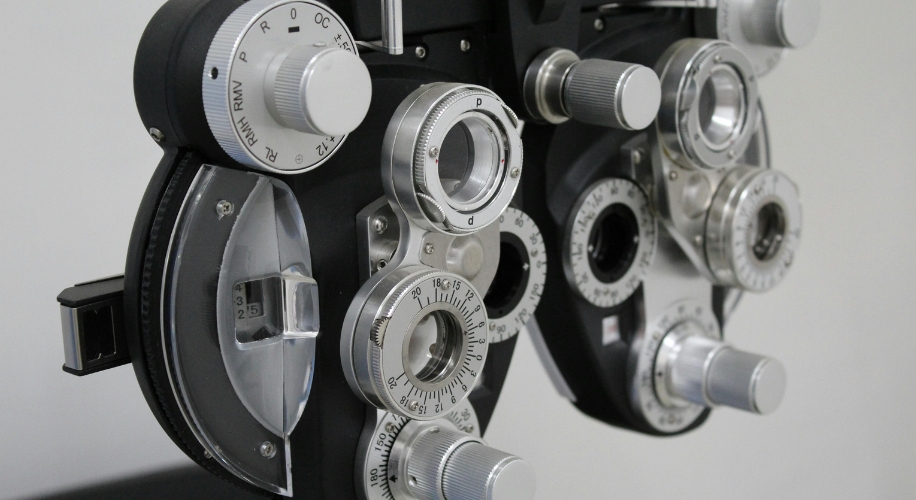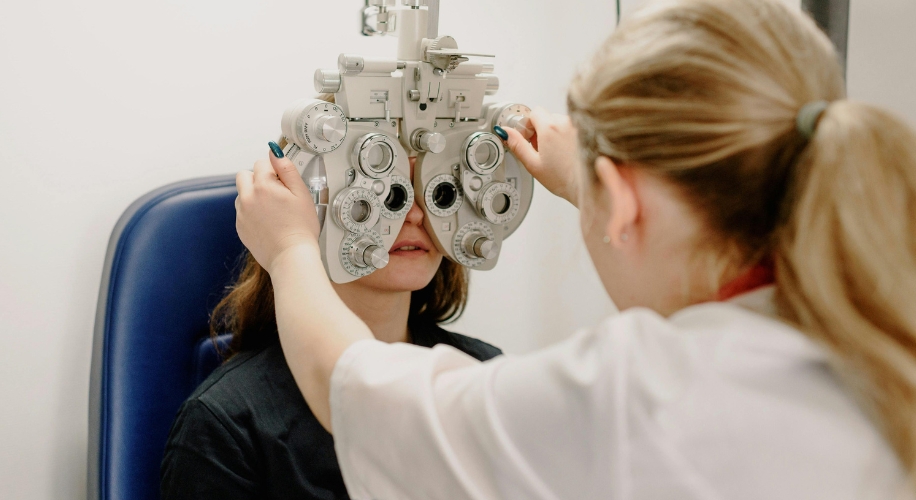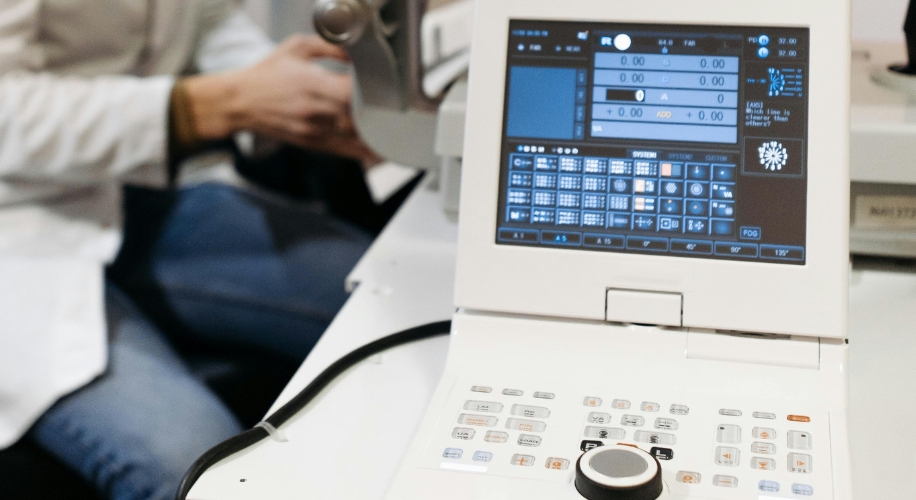All About Phoropters: How Optometrists Refine Your Vision
- BY Dr. Steven Liem
- IN Eye Health

Photo by VICTOR REGA
In the world of optometry, precision is paramount. Whether you’re getting your first pair of glasses or updating your prescription, the phoropter plays a crucial role in determining your visual acuity.
What is a Phoropter?
A phoropter is a sophisticated device used by eye care professionals to measure refractive error and determine the correct prescription for corrective lenses. It resembles a large pair of binoculars mounted on a stand, with various lenses and knobs that allow for precise adjustments.
How Does a Phoropter Work?
When you sit down for an eye exam, the optometrist places the phoropter in front of your eyes to check your refraction. During this test, the optometrist will ask you to look through the phoropter while they change lenses and ask you to compare which lenses give you clearer vision. This process helps determine your refractive error, which could include nearsightedness (myopia), farsightedness (hyperopia), astigmatism, and presbyopia.
The phoropter allows the optometrist to measure:
- Sphere: This corrects nearsightedness or farsightedness.
- Cylinder: This corrects astigmatism.
- Axis: This specifies the orientation of the cylindrical correction.
- Prism: This is used to measure and correct eye alignment issues, such as strabismus or diplopia (double vision).
By adjusting these parameters precisely, the optometrist can fine-tune your prescription to achieve optimal visual clarity.
Photo by Pavel Danilyuk
Evolution of Phoropters
Phoropters have evolved significantly since their invention in the late 19th century. Early versions were cumbersome and required manual adjustment of multiple lenses. Modern manual phoropters are equipped with rotating dials that allow quick and accurate changes in lens power and axis orientation, making the eye examination process more efficient and comfortable for patients.
With advancements in technology, automated or electronic phoropters are widespread in today’s world. These modern devices are equipped with motorized mechanisms that allow for quick and precise adjustments of lenses. The phoropter’s settings can be controlled using a keypad or touchscreen interface, enabling rapid changes between different lenses.
Why Are Phoropters Important?
- Accuracy: Phoropters provide highly accurate measurements of refractive errors, ensuring that prescriptions are tailored to each individual’s unique visual needs.
- Diagnostic Tool: They help diagnose various eye conditions and assess the overall health of the eyes beyond just visual acuity.
- Patient Interaction: The process of using a phoropter involves direct interaction between the optometrist and the patient, allowing for personalized adjustments based on real-time feedback.
- Prescription Refinement: Phoropters allow optometrists to refine prescriptions based on subjective feedback from patients, ensuring the final prescription provides optimal vision correction.

Photo by Ksenia Chernaya
Phoropters are indispensable tools in the field of optometry, providing precise measurements and enabling optometrists to prescribe accurate glasses and contacts. Their evolution from simple lens holders to sophisticated diagnostic instruments reflects advancements in both technology and our understanding of vision correction. The next time you visit your optometrist, take a moment to appreciate the role of the phoropter in ensuring your vision is as clear and comfortable as possible. If you have any questions about phoropters or eye care in general, don’t hesitate to ask your optometrist!


